Best fingerstyle guitars 2025: the finest guitars for fingerstyle, whatever your budget
Take your playing to the next level with our selection of the best guitars for fingerstyle from Martin, Yamaha, Taylor, Washburn, Larrivee, Cordoba, Fender…
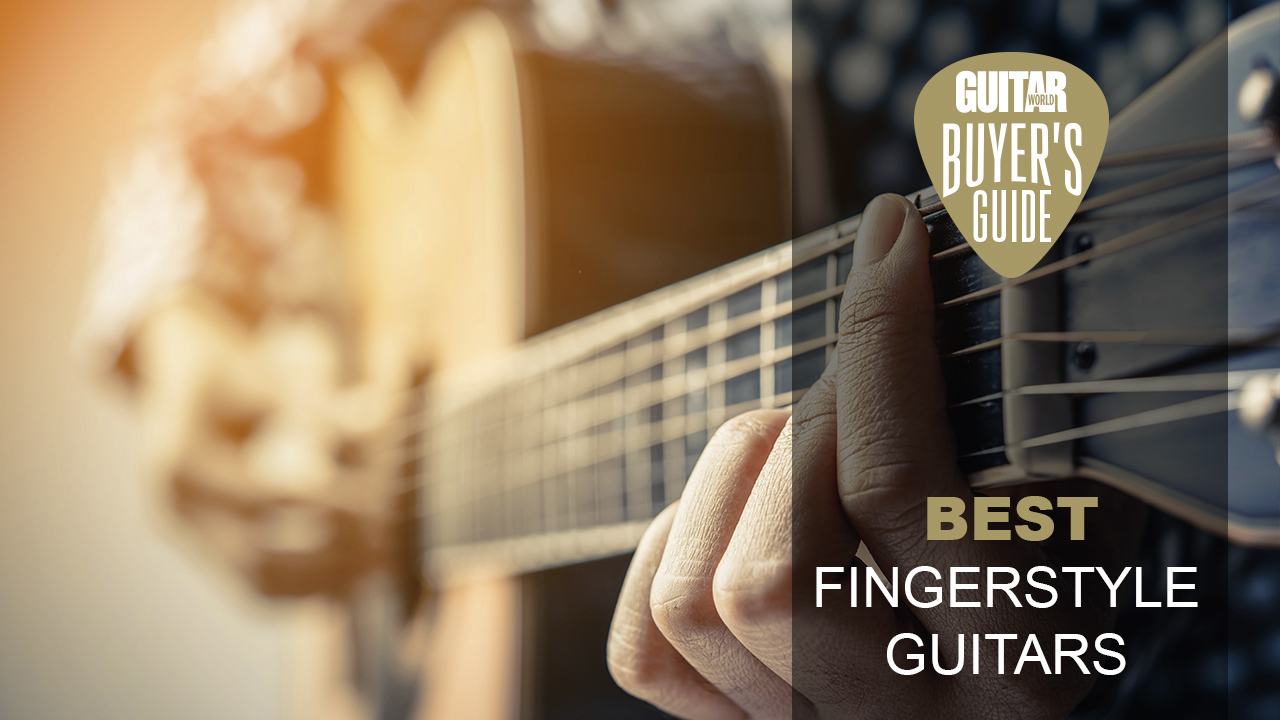
Looking to take up, or excel at, fingerstyle? Then we recommend you seriously consider purchasing a fingerstyle guitar that’s been designed and built for the job. While it’s possible to play fingerstyle on any guitar, the best fingerstyle guitars are much better suited to fast-flowing, full-finger action.
Rather than relying on a pick, fingerstyle players use, you’ve guessed it, their fingers to pluck their guitar’s strings. This technique reveals huge opportunities including harmony in your repertoire, because instead of being limited to single melodic lines, plus perhaps a bass line, you can use all four fingers and your thumb to sound up to five notes at a time.
Of course, using a pick provides more power than flesh and nail, and enables a stronger attack and potentially higher volume. Which is why dedicated fingerstyle guitars are constructed differently to the larger, heavily built dreadnoughts and jumbos you’ll find in the hands of many flatpickers. In contrast, fingerstyle guitars are built to emit the finest, sweetest and most balanced tone, even when played with a light touch.
To help you take your fingerstyle skills to the next level we’ve put together our, ahem, pick of the most suitable guitars available today. There’s something here for everyone, whatever your budget.
Best fingerstyle guitars: Our top picks
Our top pick has to be the Taylor 812ce, which is quite literally tailor-made for fingerstyle. Not only does it look gorgeous, but its short scale length, small body and armrest make it super comfortable to play.
Of course, it sounds out-of-this-world too. Strike any note and you’ll immediately hear the classic combination of spruce and Indian rosewood work its magic, it’s hard to imagine a more tonally balanced guitar than this Taylor. It’s not cheap but trust us, it’s gonna be a keeper.
Talking of cheap, hello Fender CC-140SCE Concert. Well, perhaps accessible is a kinder term. At this low price point the market is swamped with dreads and jumbos, so it’s both rare and satisfying to find an affordable small-bodied, fingerstyle guitar. The back and sides may be laminated Ovangkol, but the top is solid spruce and you get a Fishman CD Preamp pre-installed for gigs. This is a very capable guitar for not a lot of money.
Best fingerstyle guitars: Product guide
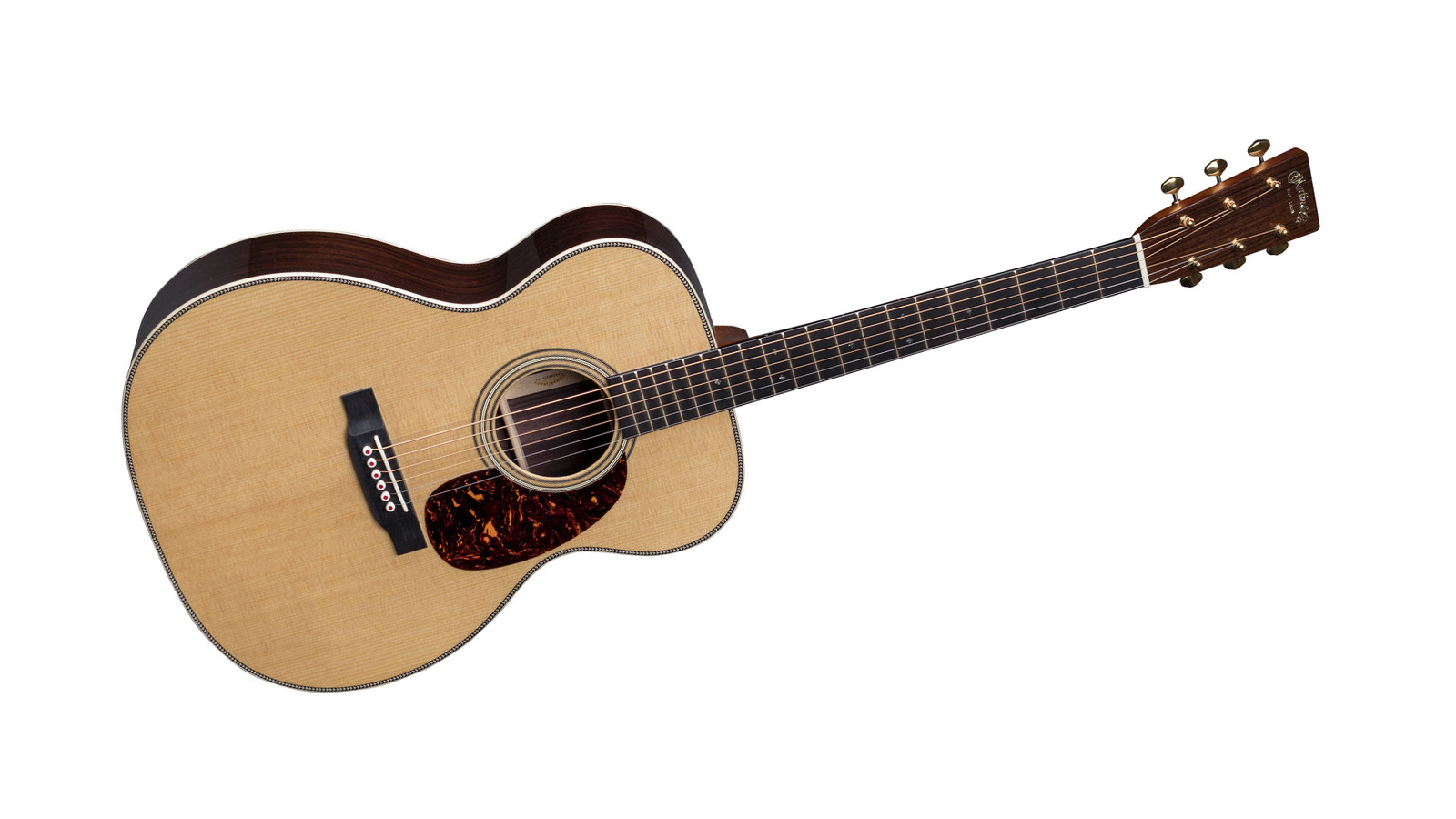
1. Martin 000-28 Modern Deluxe
Our expert review:
Specifications
Reasons to buy
Reasons to avoid
Guitarists can be so obsessed with tradition that some brands shy away from introducing features that improve playability and tone for fear of a backlash. Not so Martin with the 000-28 Modern Deluxe, a contemporary guitar conceived for fingerstyle.
Perhaps Martin has got away with it because, despite its state-of-the-art appointments, the 000-28 looks every inch a traditional, vintage Martin. It’s absolutely stunning, from its torrefied spruce top to its flamed maple bindings and gold open-gear tuners.
However, what’s not so obvious is that the bridgeplate is made from carbon fibre, the neck’s hiding a lightweight truss rod and the red dot bridge pins are Liquidmetal. These features have been included for one reason, to boost volume.
The bridgeplate and truss rod enable a lighter build, while the pricey bridge pins are made from Zirconium alloy, a material that reflects energy instead of absorbing it. The combination of its balanced tone, enhanced by the time-proven tone woods, and the increased volume and dynamics delivered by its ultra-modern features make this small-bodied, short-scale Martin a fingerstyle player’s dream.
Read the full Martin 000-28 Modern Deluxe review
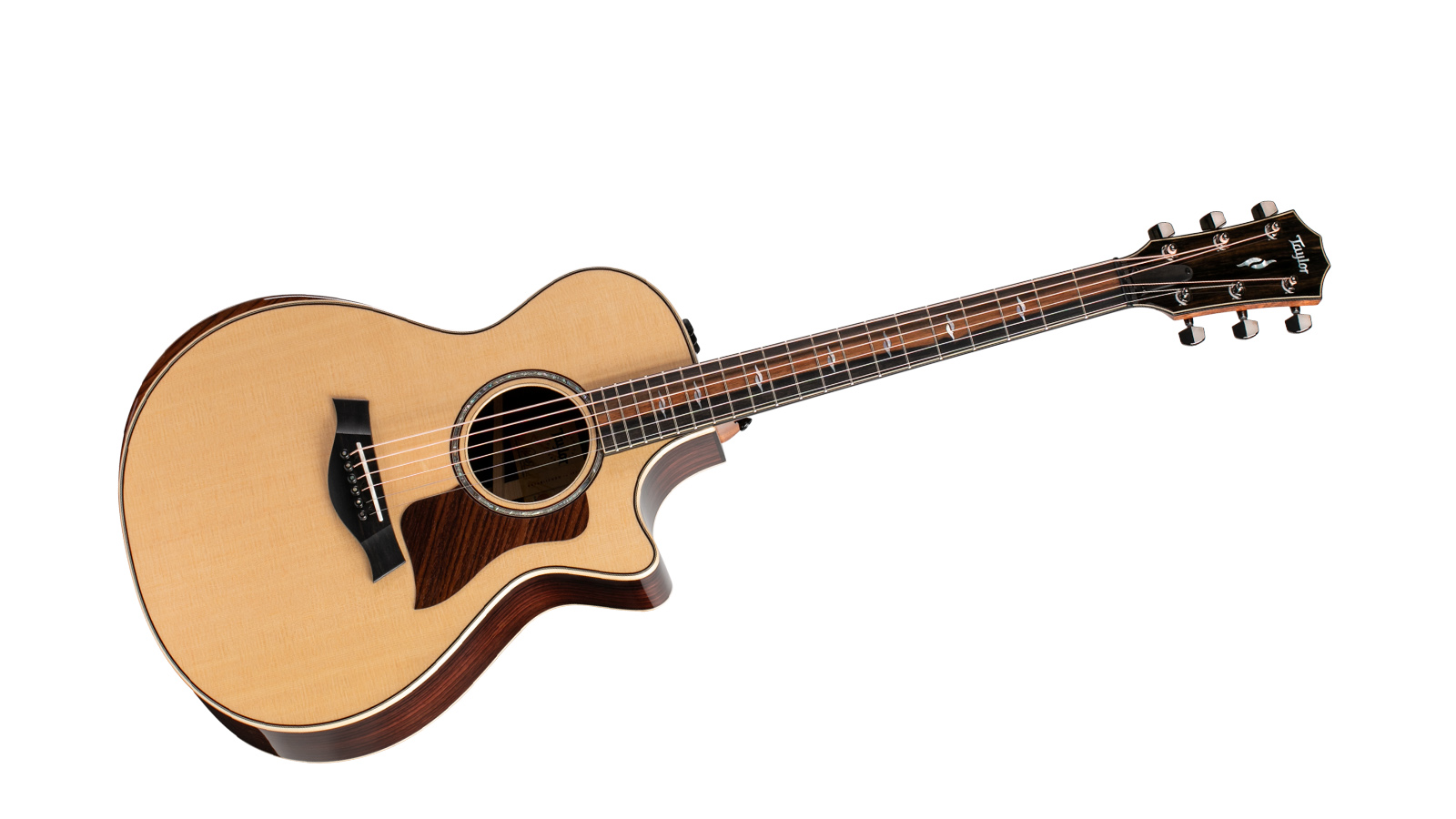
2. Taylor 812ce
Our expert review:
Specifications
Reasons to buy
Reasons to avoid
Is this the Holy Grail of fingerstyle guitars? Nah, the Taylor 812ce is actually very easy to find, but in every other respect it’s six-string Nirvana. Forgive us for all the daft religious/spiritual metaphors but this guitar really is something special.
Its lovely Grand Concert body is compact enough to sit perfectly balanced on the thigh, with that rosewood armrest contributing even deeper comfort for long fingerstyle sessions. Venetian cutaways can be a Marmite feature, but there’s no doubt they’re a blessing for fingerstyle players, so we’re made up to find one here.
The scale length is short at 24.8”, which allows for less tension in the strings. This, in turn, has enabled Taylor’s luthiers to incorporate light V-class bracing for incredible response, volume and sustain. The result? Small body, big sound.
The tonewoods are the tried and tested combination of spruce for the top, Indian rosewood for the back and sides, and ‘hog for the neck. True to Taylor’s commitment to the environment, the gorgeously fast fretboard is ‘smoky’ ebony, proving that woods must no longer conform to traditional ideals to be more than ‘ideal’.
The Taylor 812ce is often overlooked by players for its near identical brother, the GA814. Sure, the 814 is a more versatile guitar but if you’re an out-and-out fingerstyle player the 812ce takes the biscuit.
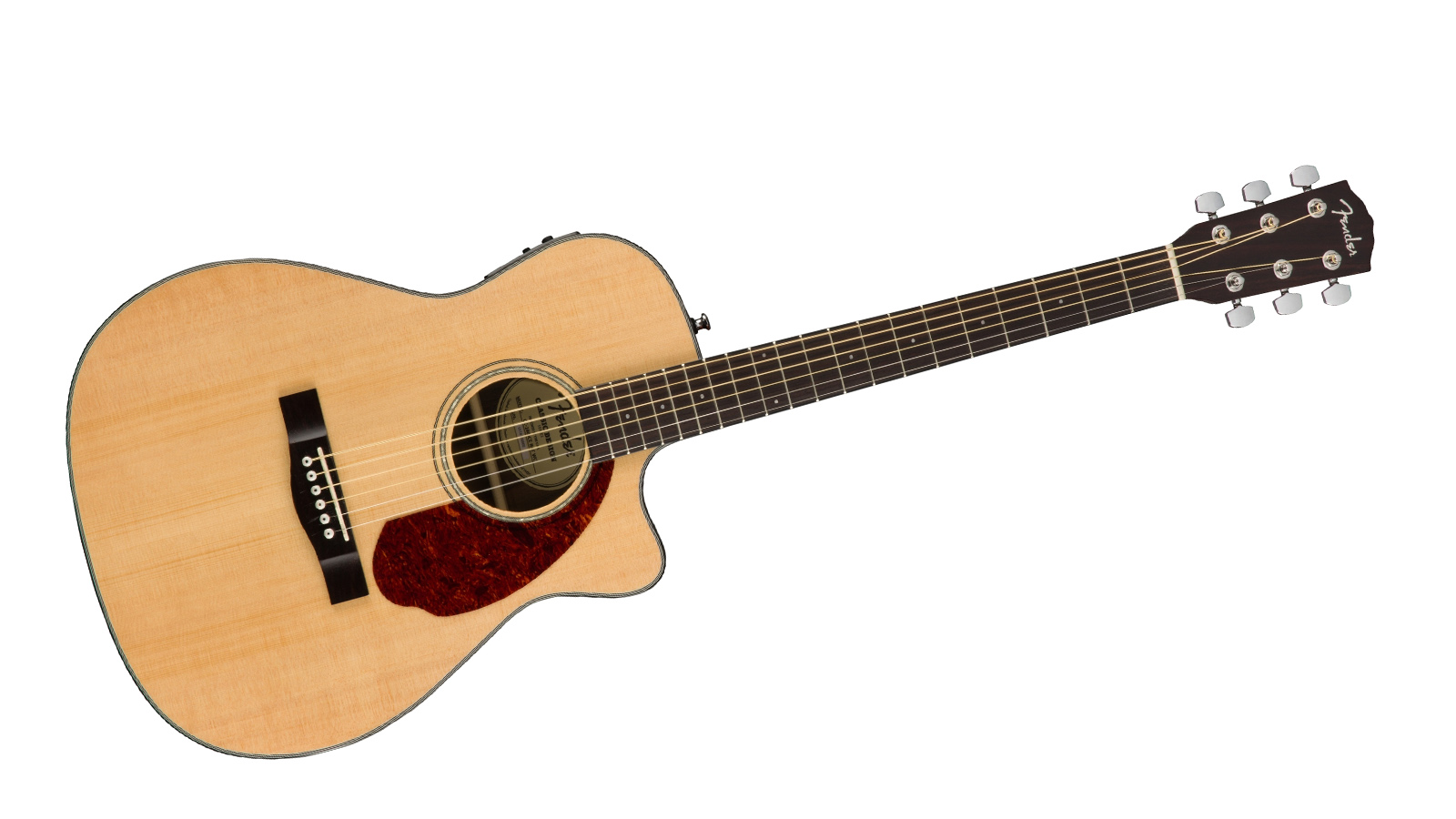
3. Fender CC-140SCE Concert
Our expert review:
Specifications
Reasons to buy
Reasons to avoid
Dreads and jumbos dominate the affordable end of the acoustic market, making it hard to find a bargain fingerstyle guitar. Thank goodness Fender has seen sense with its adorable little CC-140SCE Concert. Like all good fingerstyle guitars, it’s small and lightly built for sweet tone and good projection.
The solid spruce top is a welcome addition for a top brand guitar retailing at around the $400/£350 mark. The back and sides are laminated Ovangkol, which is very similar in tone to rosewood, exhibiting fine balance but perhaps slightly fuller in the midrange and highs. The fretboard is a decent piece of walnut, another nice touch for a guitar at this price, and the whole instrument is tidily built and neatly finished.
The CC-140SCE Concert packs a Fishman CD Preamp too – concert in name, concert in nature! If you’re working to a tight budget this Fender will cover a lot of bases for not a lot of money.
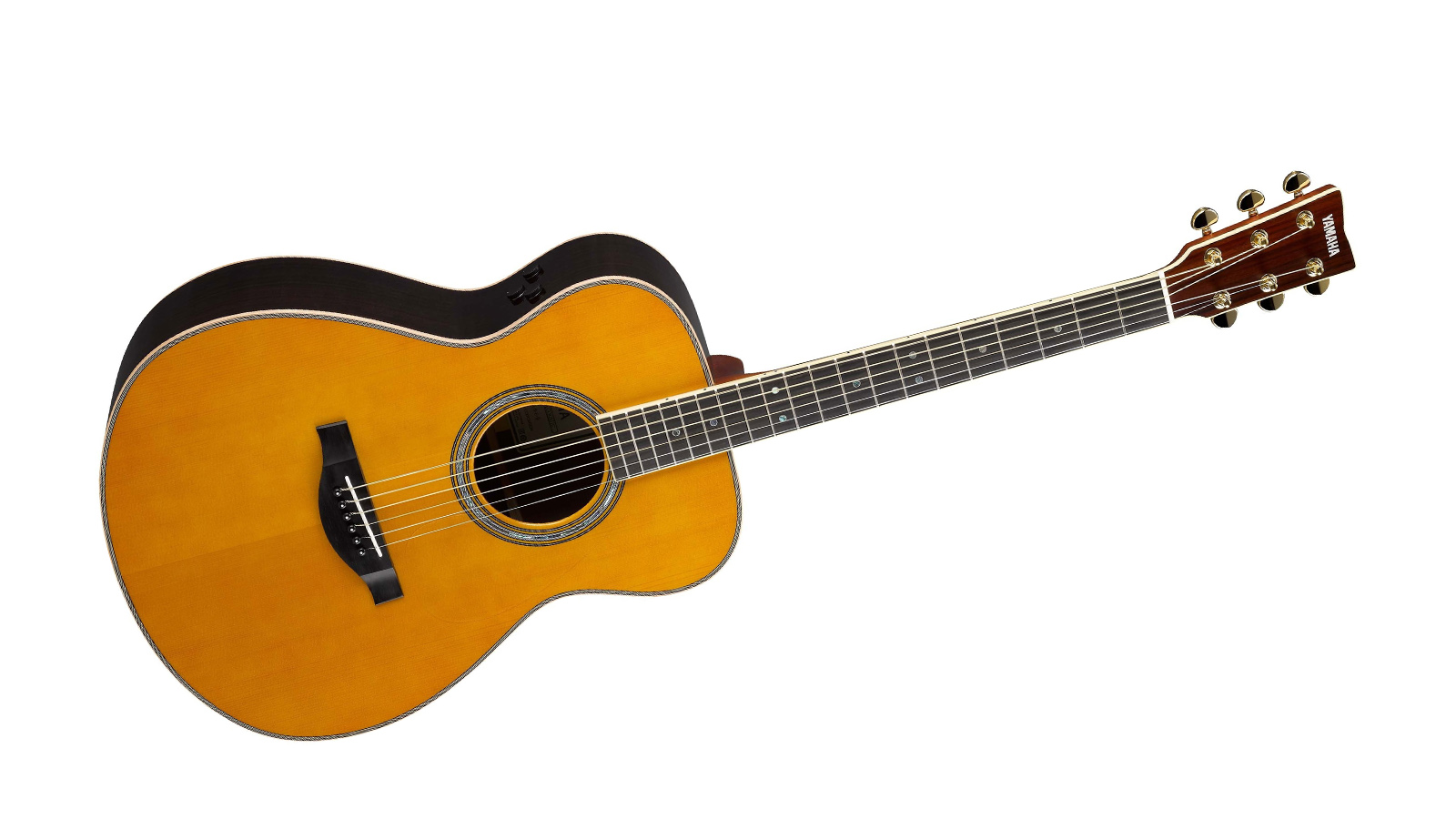
4. Yamaha LS-TA TransAcoustic
Our expert review:
Specifications
Reasons to buy
Reasons to avoid
Yamaha’s L series is its premium line of steel strung guitars, and the LS moniker denotes the brands fingerstyle orientated small body shape (the LL is its ‘Original Jumbo’, which is actually more like a dread, and the LJ is a ‘Medium Jumbo’, which looks, well, like a jumbo).
Some of these guitars, especially the made in Japan versions, have sky-high prices, but the cheaper Chinese-made LS-TA represents amazing value when you consider the spec.
The top is torrefied solid Engelman spruce, the back and sides are solid rosewood, the neck is a mahogany and rosewood ply for unsurpassed strength and rigidity, and the fingerboard is an exquisite slice of the smoothest ebony. So, there you have it, a beautifully appointed acoustic that’s perfect for fingerstyle, with a competitive street price close to $1,000/£1,000.
But that’s not all. Hidden away within that petite body are some clever electrical gubbins that provide reverb and chorus effects, even when the LS-TA isn’t plugged into an amp. These effects are generated by an electrical actuator, which conveys the vibrations it generates to the body of the guitar for an extremely natural, if somewhat uncanny, sound. Dial in the correct amount and the tone is mesmerizing.
Playing the LS-TA, with its extra sonic dimensions activated, quickly becomes addictive. The circuitry is more than just a gimmick and, anyway, turn it off and you’re still left with a sweet sounding, small-bodied guitar.
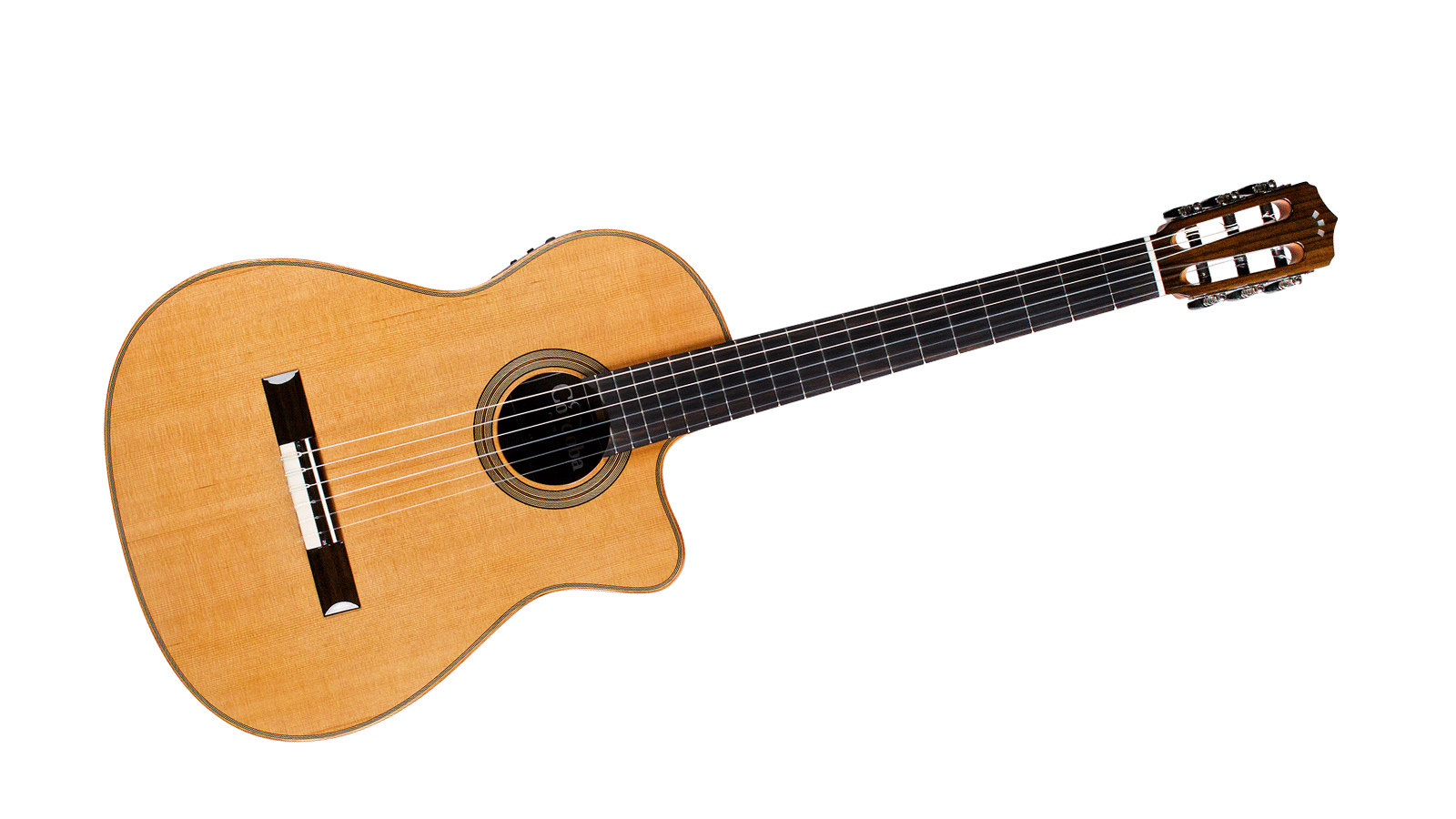
5. Cordoba Orchestra CE
Our expert review:
Specifications
Reasons to buy
Reasons to avoid
Yep, the Cordoba Orchestra is nylon strung but that doesn’t mean it can’t be used for fingerstyle. Classical and Flamenco genres are, of course, predominantly fingerstyle (with ample opportunity for Rasgueos in the latter’s case) but we believe this fusion guitar is best suited to bossa nova, Latin and jazz.
As a fusion model, it’s arguably closer to a steel strung guitar in design and aesthetics than it is to a traditional classical model. The action is lower, the nut is narrower, the fingerboard is radiused and it features a cutaway and onboard preamp. So, if you’re a player used to steel string acoustics or electrics then it’s going to feel very familiar. The only difference being you’ll benefit from some nail on nylon mojo.
The top is Solid Western Red Cedar for oodles of warmth, matched to rosewood back and sides for balance and articulation. The robust Fishman Presys Blend preamp makes this very attractive Cordoba gig-ready out of the box too.

6. Larrivee OM-05 Select Series
Our expert review:
Specifications
Reasons to buy
Reasons to avoid
As its name suggests the Larrivee OM-05 is an Orchestra Model, so it has a slightly longer scale length than some of the 000 guitars in this guide. This increases string tension, giving it great bass response and good volume but also expands the fret spacing slightly. Whether this means the OM-05 is a good fit for you is entirely down to personal preference, but this is certainly a guitar that will suit most people for fingerstyle, flat picking and strumming.
Tonally, its mahogany build makes it incredibly dynamic to play, with a tone that’s strong on fundamentals. Focussed in the midrange, and controlled in the highs, there’s a level of clarity here that makes the Larrivee a real contender.
In addition, Larrivee’s select series features upscale appointments such as an abalone rosette, silver headstock border, JCL tuners, ebony fingerboard and curly maple bindings. It’s a versatile guitar that’s a feast for the eyes as well as the ears.
Larrivee is a relatively small maker that has an excellent reputation for design and build quality. If you’re looking for a guitar that’s slightly more exclusive than similarly priced offerings from the bigger brands then this could be the one.

7. Guild M40E Troubadour
Our expert review:
Specifications
Reasons to buy
Reasons to avoid
The M40E is a descendent of one of the most popular guitars of the 1960’s folk revival, the legendary Guild F-20. Guild entrusted ex-Gibson master luthier Ren Ferguson to take the original design and spruce it up with some modern features and appointments, such as the discreet LR Baggs Element VTC pickup.
Despite the reboot, the M40E still radiates old-time charm. The vintage style rosette, white binding and inlaid Guild peak logo on the headstock are all subtle embellishments on an otherwise unassuming guitar. It’s every inch the classic.
This is a small-bodied guitar with mahogany back and sides, which gives it a voice that’s focussed, mid-range balanced yet delicate. It’s a character that responds well to light strumming but is most at home with fingerstyle.
Playability is excellent. The compact body is lightweight and comfortable, the C-profile neck is satisfying to hold and the 12” radius rosewood fingerboard demands fast runs and swift moves. This is a guitar you’ll never tire of.

8. Washburn Bella Tono Allure SC56S
Our expert review:
Specifications
Reasons to buy
Reasons to avoid
Bella Tono Allure – it just rolls off the tongue doesn’t it? Especially if you say it as slowly as possible in your best faux Italian accent. Bella Tono, which of course translates as beautiful tone, is the name Washburn gives to its line of small-bodied guitars that ‘encompass appointments of elegant design and taste’. The Allure is the flagship model, resplendent with an abundance of dazzling inlays, including the large tropical island at the 12th fret.
The Allure is built with acacia back and sides, an attractive tone wood more often associated with ukuleles. It has similar tonal characteristics to mahogany and koa, providing a voice that’s clear, focussed and well-balanced. It’s the perfect match for the Allure’s solid spruce top.
The Studio body is not far off the size of an OM, and it shares a similar scale length of 25.5 inches. It’s both comfortable to play and powerful. There’s plenty of acoustic volume and sustain, with even more readily on tap for gigging via the built-in Barcus Berry LX4 pickup system.
Underneath all the bling lies an accomplished guitar that’s superb fun to play and a joy to listen to.
Best fingerstyle guitars: Buying advice

I have a shameful admission to make. I once bought the wrong guitar, on the basis that I thought it made me look cool. It didn’t, so don’t do it.
Let me explain. My guitar journey started with classical lessons as a young kid, which I found terminally dull (I now wish I’d paid more attention). My teenage years brought acne and, one very merry Christmas, an electric guitar (thanks Mum and Dad). My twenties brought kids and a complete lack of free time to play, but my early thirties found me shopping for a decent acoustic. Naturally, I chose a massive dreadnought, because I thought I was channelling Elvis and it’s what everybody buys. More for your money, and all that.
As it turns out, I should have bought a smaller-bodied guitar better suited to fingerstyle. My classical background, and admiration for Jeff Beck, meant that I continued to use my fingers when playing electric, so acoustic fingerstyle was a natural progression.
Where did I go wrong? Well firstly, it is quite possible to play fingerstyle on a dreadnought, or a jumbo for that matter, but it’s not ideal. Yes, these big guitars do look cool, but they were primarily designed to be loud enough to compete with other instruments in a small group or ensemble, which tends to make them bass heavy. Fingerstyle is, on the whole, a solitary pursuit that’s occasionally ripe for duets with another guitarist or singer. There’s no call for epic amounts of volume, so what should I have bought?
Small-bodied acoustics
You can trust Guitar World
Most fingerstyle guitarists favor small-bodied guitars for a balanced tone that’s not too heavy in the bass. It’s almost impossible to qualify what ‘small-bodied’ means because standards differ from one manufacturer to another, but a popular size is 000. Alternatively, Grand Auditorium, Auditorium, Grand Concert, Concert and 00 guitars can all make excellent fingerstyle instruments. Just shy away from anything too big and bassy, like a dread, or too small and focused like a parlour. The OM size is interesting because it’s usually identical to an 000 but with a longer scale length.
Tonal balance isn’t the only advantage that smaller guitars bring, the vast majority of guitarists find them way more comfortable to reach around when playing, especially when sitting down. Unlike a genre such as Bluegrass, where the dread player will be standing up with the rest of the band, fingerstyle is usually played seated, so being able to find a comfortable playing position is important.
To aid comfort even further, armrests are a common feature on fingerstyle guitars, while venetian cutaways help adventurous players access the dusty end of the fretboard.
Scale length
Fingerstyle players tend to prefer instruments with a shorter scale length because the strings carry less tension. Less tension enables fingerstyle guitars to be more lightly built, which should result in an instrument that responds well to dynamic playing and boasts decent levels of sustain and volume, even when picked lightly with flesh and nail.
They’re also less tiring to play and, because fret spacing will be closer, smaller hands will find it easier to navigate the fretboard. Of course, it’s only fair to point out that bigger hands may struggle, and if setup isn’t optimal short-scale guitars are more likely to suffer fret buzz. Overall though, short-scale guitars work really well for most fingerstyle players.
Tonewoods
Mahogany is a superb choice for fingerstyle guitars because it radiates a gorgeously focused mid-range tone, with great high-end clarity. It’s often partnered with a spruce top for enhanced balance. Koa and acacia share similar tonal characteristics with mahogany, so they’re a good choice too.
Another time-honoured combination is a spruce top with rosewood back and sides. Rosewood has a much broader frequency range than mahogany, so it’s a favorite with players who like a little more bass. That’s not to say that it’s bass heavy, far from it – rosewood and spruce are possibly the best balanced tonewoods full stop.
I still love my dreadnought, it gets played whenever I fancy hammering out some powerful chords. But my favorite acoustic is the additional one I bought the following year. It’s a small-bodied, short-scale 000, which just happens to be perfect for 90 percent of what I play. If only I’d known then what I know now…
Find out more about how we make our recommendations and how we test each of the products in our buyer's guides.
Related buyer’s guides
- Best acoustic guitars: top strummers for beginner to pro guitarists
- Best classical guitars: nylon-string guitars for every budget
- Best acoustic electric guitars: 11 electro-acoustics for all players
All the latest guitar news, interviews, lessons, reviews, deals and more, direct to your inbox!
When Simon's childhood classical guitar teacher boasted he 'enjoyed a challenge', the poor man had no idea how much he'd underestimated the scale of the task ahead. Despite Simon's lack of talent, the experience did spark a lifelong passion for music. His classical guitar was discarded for an electric, then a room full of electrics before Simon discovered the joys of keys. Against all odds, Simon somehow managed to blag a career as a fashion journalist, but he's now more suitably employed writing for Guitar World and MusicRadar. When not writing or playing, he can be found terrifying himself on his mountain bike.

